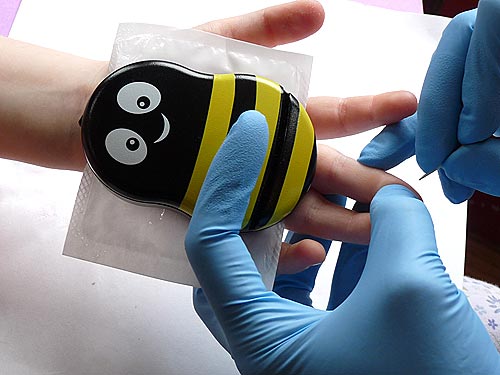Mosquito needle for Injections

LOOK away now if you are afraid of needles. A motorised, harpoon-like needle sounds painful, but in fact hurts far less than a regular injection because it resembles a mosquito's mouth parts.
Seiji Aoyagi and colleagues at Kansai University in Osaka, Japan, have developed a needle that mimics a mosquito's proboscis, which is serrated and barely touches the skin so you don't feel the initial bite. A smooth hypodermic, on the other hand, leaves a lot of metal in contact with the skin, stimulating the nerves and causing pain.
Aoyagi hopes his design could help diabetic people who have to take blood samples. Etched from silicon, the needle imitates three of the creature's seven mobile mouthparts: the two serrated maxillae and the tubular labrum (see diagram).

Unlike Aoyagi's previous attempts to mimic a mosquito's bite, each of these parts is driven by tiny motors based on lead zirconium titanate (PZT) - a piezoelectric crystal that expands very slightly when you apply an alternating voltage. The vibrations of the crystal can be used as a simple motor to control how the needle enters the skin.
The sections of the needle break the skin in the same sequence as they do with a mosquito, vibrating at about 15 hertz to ease it into the skin - as observed in mosquitoes under high-speed video microscopes. Aoyagi has tested his needle on himself and three volunteers, who agree that the pain is much reduced but lasts longer than with a conventional syringe. He thinks that by mimicking more of the creature's mouthparts, including an addition to steady the needle's entry, he'll be able to reduce that dull pain.

Microfluidics engineer Suman Chakraborty of the Indian Institute of Technology in Kharagpur, who has also worked on similar designs in the past, is impressed by Aoyagi's progress. "It's a substantial move towards improving the technology," he says.




Post a Comment